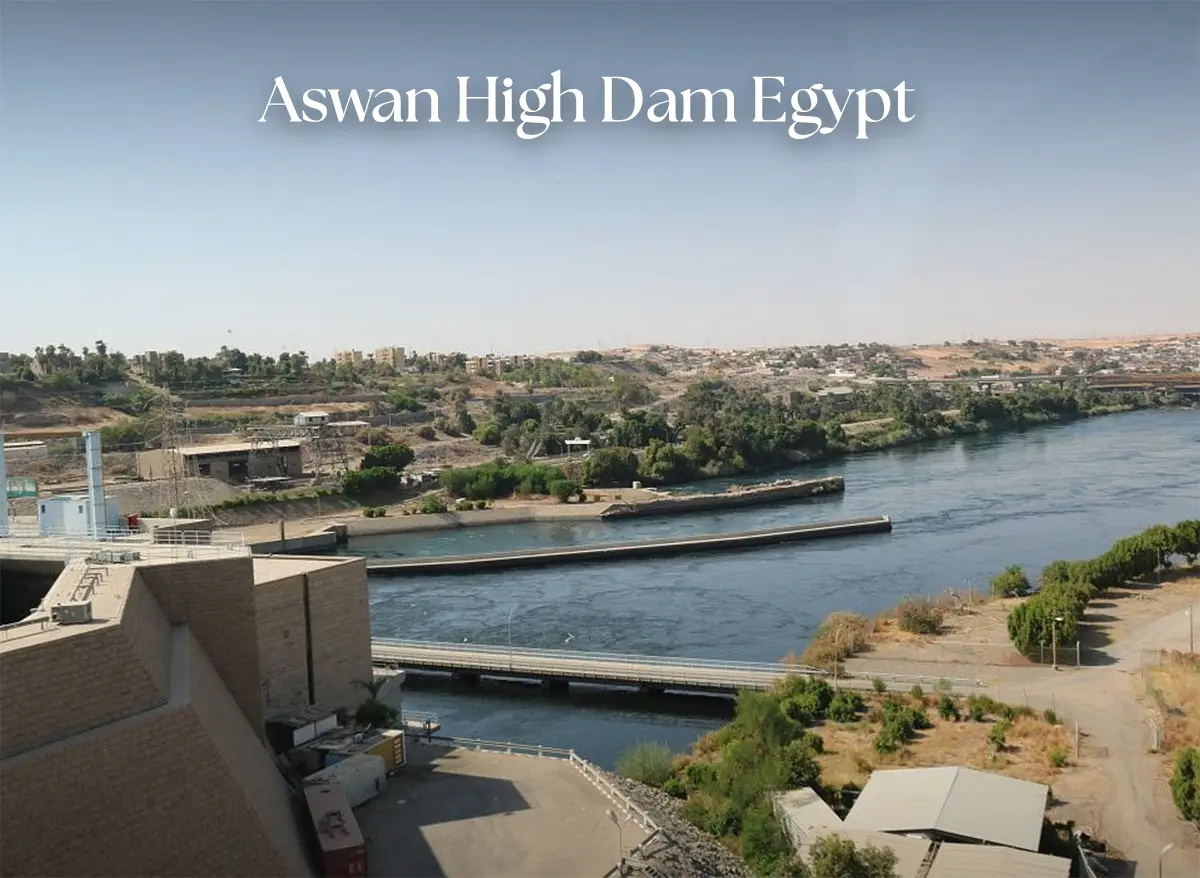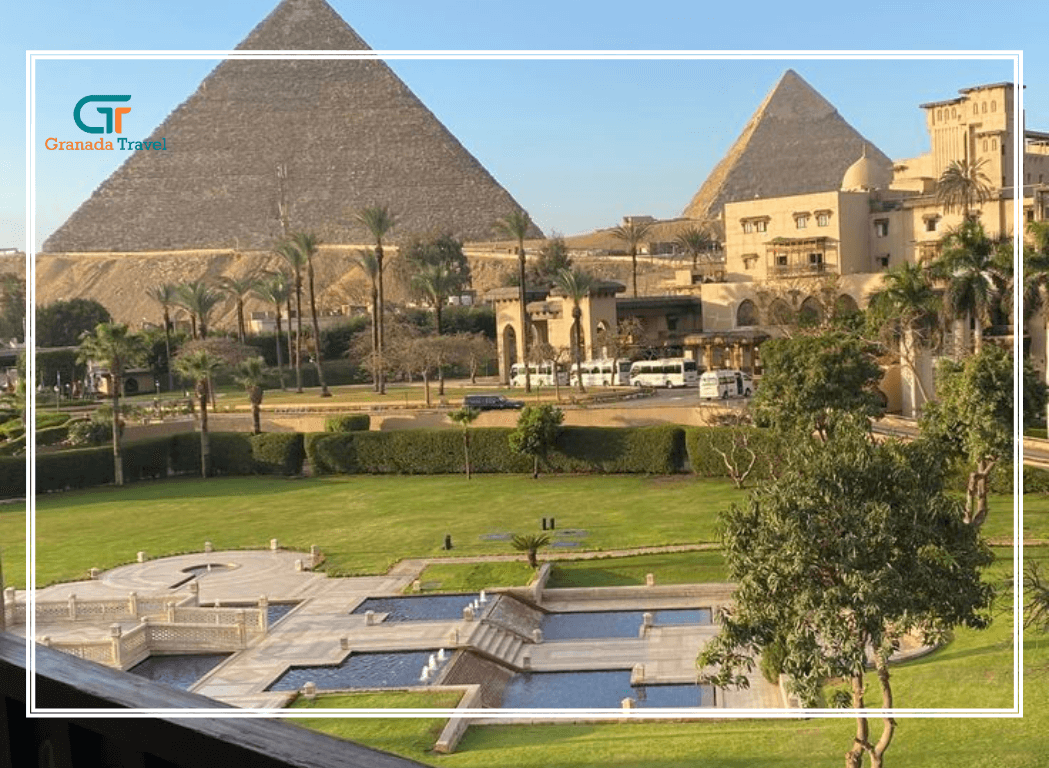
The Aswan High Dam Egypt: A Monumental Feat of Engineering
The Aswan High Dam Egypt stands as one of the most iconic engineering marvels of the 20th century, transforming the landscape, economy, and culture of Egypt. Located in Aswan Egypt (Aswan Egypt), this colossal structure on the Nile River has reshaped the region in profound ways. In this comprehensive exploration, we’ll delve into what is the Aswan High Dam, where is the Aswan High Dam, why was the Aswan High Dam built, and its lasting impacts, including Aswan High Dam benefits, Aswan High Dam environmental impact, and Aswan High Dam problems. With a focus on the High Dam Aswan Egypt, this blog will also highlight Aswan High Dam facts, its historical significance, and its role in modern Egypt.
What is the Aswan High Dam?
The Aswan High Dam is a massive rock-fill dam located near the city of Aswan in southern Egypt. Spanning the Aswan High Dam river, the Nile, it was constructed to control flooding, generate hydroelectric power, and provide a reliable water supply for agriculture and industry. The dam, often referred to simply as the Aswan High Dam, is one of the largest of its kind in the world, measuring approximately 3,830 meters in length, 980 meters in width at its base, and 111 meters in height.
The Aswan High Dam location (Aswan Egypt Map) is strategically positioned to harness the power of the Nile, the lifeblood of Egypt. Its creation marked a turning point in Egypt’s modernization efforts, but it also sparked debates about its long-term consequences, which we’ll explore later.
When Was the Aswan High Dam Built?
The question of when was the Aswan High Dam built is key to understanding its historical context. Construction began in 1960 and was completed in 1970, with the official inauguration taking place in 1971. The project was a cornerstone of President Gamal Abdel Nasser’s vision to modernize Egypt and reduce its dependence on foreign aid. The Soviet Union provided significant technical and financial support, while Egyptian engineers and workers played a pivotal role in its construction.
The High Dam Aswan Egypt took a decade to build due to its sheer scale and the challenges of managing the Nile’s flow during construction. The project required relocating thousands of people, including the famous Abu Simbel relocation (Abu Simbel Relocation), where ancient temples were moved to avoid flooding from the dam’s reservoir.
Why Was the Aswan High Dam Built?
So, why was the Aswan High Dam built? The primary motivations were to address Egypt’s recurring challenges with Nile River flooding, improve irrigation for agriculture, and generate electricity to fuel industrial growth. Before the dam, the Nile’s annual floods were both a blessing and a curse, providing fertile silt but also causing unpredictable destruction. The Aswan High Dam Egypt was designed to regulate the river’s flow, ensuring a steady water supply year-round.
Additionally, the dam’s hydroelectric power station was intended to meet Egypt’s growing energy demands. Today, it generates over 2,100 megawatts of electricity, a significant contribution to the nation’s power grid. The dam also created Lake Nasser, one of the world’s largest artificial lakes, which we’ll discuss later.
[cta-actions]
Where is the Aswan High Dam?
For those wondering where is the Aswan High Dam, it is situated approximately 13 kilometers south of Aswan, a vibrant city in southern Egypt known for its rich history and proximity to Nubian culture (Nubian Village Aswan). The dam spans the Nile River, which is the Aswan High Dam river, and its location makes it a focal point for visitors exploring the region. If you’re planning a trip, consider staying at one of the many Aswan hotels (Aswan Hotels) to experience the dam and nearby attractions.
The Aswan High Dam location is easily accessible by road from Aswan’s city center, and guided tours are available for those interested in learning more about its engineering and history. Its proximity to other landmarks, such as the Philae Temple and Abu Simbel, makes it a must-visit destination.
Aswan High Dam Benefits
The Aswan High Dam benefits are numerous and have had a transformative impact on Egypt. Here are some of the key advantages:
- Flood Control: The dam has virtually eliminated the destructive flooding that once plagued the Nile Valley, protecting homes, farmland, and infrastructure.
- Irrigation: By storing water in Lake Nasser, the Aswan High Dam lake, the dam provides a reliable water supply for year-round irrigation, boosting agricultural productivity and enabling multiple harvests.
- Hydroelectric Power: The dam’s power station supplies a significant portion of Egypt’s electricity, supporting industrial growth and reducing reliance on fossil fuels.
- Economic Growth: The dam has facilitated the expansion of arable land and industrial development, contributing to Egypt’s economy.
- Tourism: The dam itself is a tourist attraction, drawing visitors eager to marvel at its scale and learn about its history.
These benefits have cemented the Aswan High Dam Egypt as a symbol of progress and ingenuity.
Aswan High Dam Environmental Impact
While the Aswan High Dam benefits are undeniable, the Aswan High Dam environmental impact has sparked significant debate. The dam’s construction altered the Nile’s natural ecosystem, leading to both positive and negative consequences. Here are some key environmental impacts:
- Loss of Silt: Before the dam, the Nile’s annual floods deposited nutrient-rich silt on farmland, naturally fertilizing the soil. The dam traps this silt in Lake Nasser, forcing farmers to rely on chemical fertilizers, which can harm the environment.
- Erosion: The reduction in silt flow has led to increased erosion along the Nile Delta, threatening coastal ecosystems and agricultural land.
- Water Quality: Stagnation in Lake Nasser has raised concerns about water quality, as reduced flow can lead to higher concentrations of pollutants.
- Biodiversity Loss: The dam has disrupted the Nile’s aquatic ecosystems, affecting fish populations and other wildlife that depended on the river’s natural cycles.
- Climate Resilience: On the positive side, the dam’s water storage capacity helps Egypt manage water scarcity during droughts, enhancing resilience to climate change.
These environmental challenges highlight the complex trade-offs of large-scale infrastructure projects like the High Dam Aswan Egypt.
Aswan High Dam Lake: Lake Nasser
The Aswan High Dam lake, known as Lake Nasser, is one of the most significant outcomes of the dam’s construction. Stretching over 500 kilometers and covering an area of approximately 5,250 square kilometers, it is one of the largest man-made lakes in the world. Named after President Nasser, the lake straddles the border between Egypt and Sudan, with the Sudanese portion called Lake Nubia.
Lake Nasser serves multiple purposes:
- It stores water for irrigation and drinking, ensuring a steady supply during dry seasons.
- It supports fisheries, providing a source of food and income for local communities.
- It is a hub for tourism, with boat cruises offering stunning views of the surrounding desert and ancient sites like Abu Simbel.
However, the creation of Lake Nasser also displaced tens of thousands of Nubian people, whose villages were submerged (Nubian Village Aswan). The Abu Simbel relocation was another monumental effort to preserve cultural heritage threatened by the rising waters.
Aswan High Dam Problems
Despite its benefits, the Aswan High Dam problems are significant and continue to challenge Egypt. Some of the key issues include:
- Displacement: The construction of the dam and Lake Nasser displaced over 100,000 people, primarily Nubians, who lost their homes and cultural heritage.
- Siltation: The accumulation of silt in Lake Nasser reduces the lake’s storage capacity over time, requiring ongoing management.
- Salinization: Reduced freshwater flow to the Nile Delta has increased soil salinity, affecting agricultural productivity.
- Geopolitical Tensions: The dam’s control over the Nile’s flow has led to disputes with downstream countries, particularly Sudan and Ethiopia, over water rights.
- Maintenance Costs: Maintaining the dam and its infrastructure is expensive, requiring significant investment.
These challenges underscore the need for careful management and international cooperation to mitigate the Aswan High Dam problems.
Aswan High Dam Pros and Cons
To summarize, here’s a balanced look at the Aswan High Dam pros and cons:
Pros:
- Effective flood control, protecting lives and property.
- Reliable irrigation, supporting agriculture and food security.
- Significant hydroelectric power generation, fueling economic growth.
- Creation of Lake Nasser, a vital water reservoir and tourism asset.
- Symbol of national pride and engineering achievement.
Cons:
- Environmental degradation, including loss of silt and delta erosion.
- Displacement of Nubian communities and loss of cultural heritage.
- Geopolitical tensions with neighboring countries.
- High maintenance costs and long-term siltation issues.
- Disruption of the Nile’s natural ecosystem.
The Aswan High Dam Egypt is a testament to human ambition, but its legacy is a complex mix of triumphs and trade-offs.
Aswan High Dam Facts
Here are some fascinating Aswan High Dam facts to round out your understanding:
- The dam contains 43 million cubic meters of material, making it 17 times larger than the Great Pyramid of Giza.
- It was funded in part by the Soviet Union, marking a significant Cold War-era collaboration.
- The Abu Simbel relocation cost $40 million and involved cutting the temples into blocks and reassembling them 200 meters higher.
- Lake Nasser is home to Nile crocodiles and supports a growing fishing industry.
- The dam’s power station supplies around 10% of Egypt’s electricity needs today.
These facts highlight the scale and significance of the High Dam Aswan Egypt.
Visiting the Aswan High Dam
For travelers, the Aswan High Dam Egypt is a must-see attraction. Located near Aswan Egypt (Aswan Egypt), it’s easily accessible from the city’s many Aswan hotels (Aswan Hotels). Guided tours provide insights into the dam’s history and engineering, often combined with visits to nearby sites like the Philae Temple or Nubian villages (Nubian Village Aswan). Check out an Aswan Egypt map (Aswan Egypt Map) to plan your itinerary.
The dam’s observation deck offers panoramic views of Lake Nasser and the Nile, making it a great spot for photography. Be sure to visit during the cooler months (October to April) for a comfortable experience.
Symbol of Egypt’s Ambition
The Aswan High Dam Egypt is more than just a dam, it’s a symbol of Egypt’s ambition, resilience, and ingenuity. From its role in controlling the Aswan High Dam river to its creation of Lake Nasser, the dam has reshaped the nation’s landscape and economy. While the Aswan High Dam benefits are immense, its Aswan High Dam environmental impact and Aswan High Dam problems remind us of the complex trade-offs involved in such projects.
Whether you’re fascinated by engineering, history, or the natural beauty of Aswan Egypt, the High Dam Aswan Egypt offers a compelling story. Plan a visit, explore the nearby Nubian villages (Nubian Village Aswan), and marvel at the legacy of this monumental structure. For more information on planning your trip, check out Aswan hotels (Aswan Hotels) and an Aswan Egypt map (Aswan Egypt Map).
[cta-actions]
The Aswan High Dam Egypt: A Monumen…
Ready to Book?
Get in touch with us for personalized travel experiences
Contact Us
Send us your inquiry





